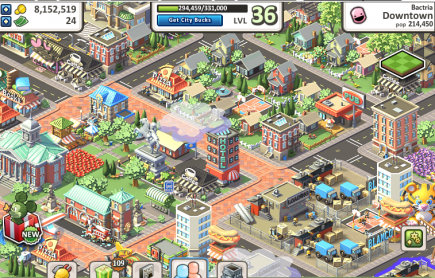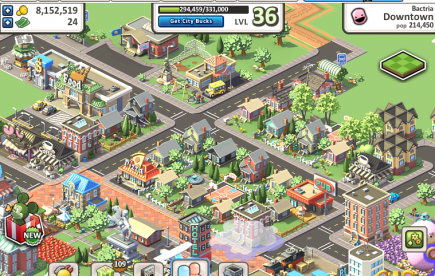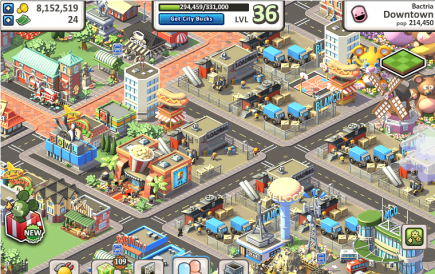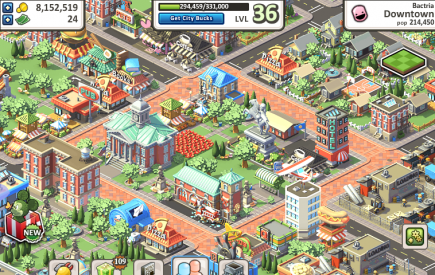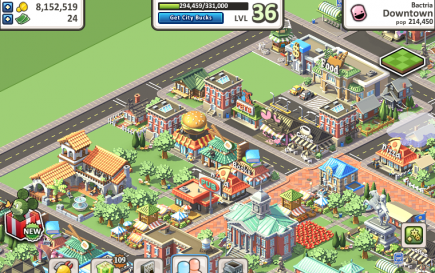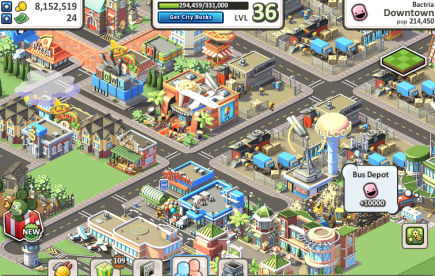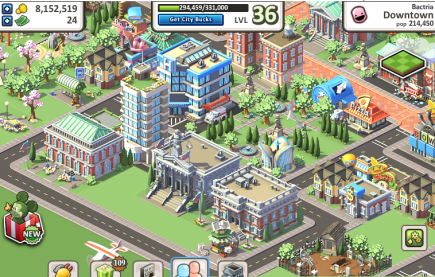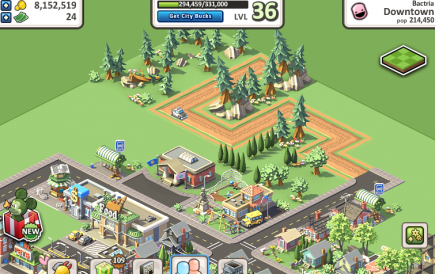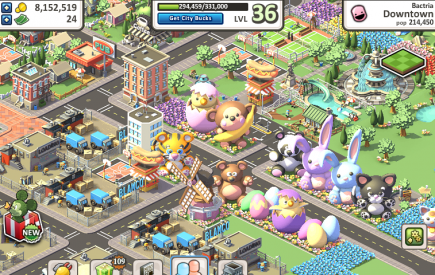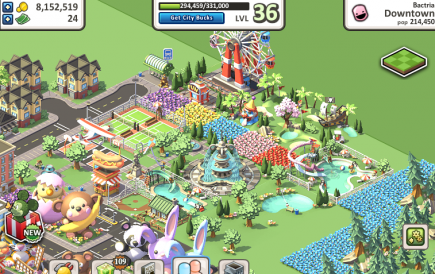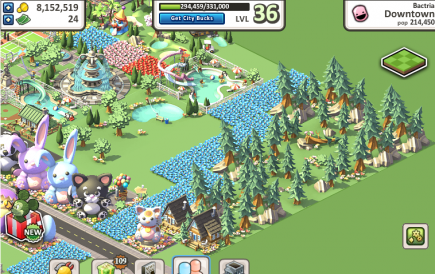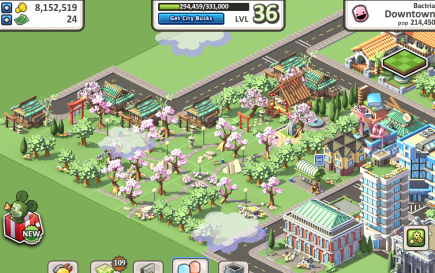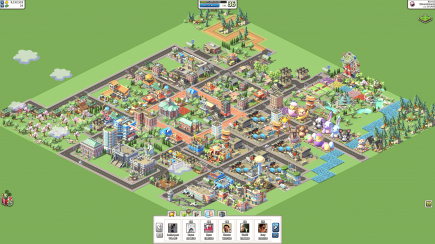Social City
I didn’t blog about Social City so much (Playdom discouraged blogging about our games), but I played it a lot in early 2010, both alone and with Miranda. (We had a tradition where I would earn in-game coins during the week and then over the weekend we’d figure out where to place items in our city.) As the city evolved, we’d have to figure out where to place new buildings in such a way that it didn’t destroy the character of the existing city, and led to a city that we could imagine we’d want to live in.
Here’s a tour of our city.
The game starts you off with a factory, a few houses, and a nascent town square; this is what that starter area eventually turned into.
We expanded those houses into a residential area. We tried to avoid putting single-family houses right next to factories, but they’re not too far away, with a little bit of buffering provided by larger buildings.
We put all the factories together: smog central. Other industrial buildings went there as well, e.g. the radio tower and the water tank.
The town square is the heart of the city. I really liked it when they released the brick road: I thought it worked well as an accent around the square. The early government buildings and parks went here.
We wanted to find a place for every non-premium building somewhere in town. In my mind, I divided retail buildings into upscale and downscale, and put the more upscale ones over here, next to the town square on the opposite side from the factories.
The other retail buildings went south of the town square, near where the factories were located; aside from expressing elitism and class structure, this also was done for the pragmatic reason that they were generally more enclosed: you can put a movie theatre or a megamart next to a factory without ruining the experience.
As we leveled up, we unlocked more impressive government buildings; these we put in an area southwest of the town square, along with similarly constructed buildings such as large banks.
On the edge of the residential area we put the school; also, to represent the transition from town, we added a dirt road leading to a wooded area.
From the beginning, large animals were available as gifts. I would have been happy to have not placed these in the city at all—I wouldn’t want to live in a city with giant animal statues!—but Miranda overruled me. So, as a compromise, we put them in a row, forming a border between the factory district and a recreation area.
Here’s the recreation area: it’s also next to the residential district, on the other side from the schools. Lots of parks, lots of sports fields, one of only two places in town where I broke down and put parking lots.
When the game was launched, it didn’t have water, so people ended up using blue flowers to represent rivers. So we placed that as a border on the southeast side of town, near the recreation area; on the far side of the river, we put trees and rock outcroppings.
Once they’d fleshed out standard building types, the game team started releasing various themed gift sets. The first one of those (and the only one that I placed in my main city) was the Japanese theme, and I really liked it: nice architecture, I like the cherry blossoms lining the paths.
And here’s what it looks like when you put it all together!
The static pictures above don’t really do the game justice: a lot of its charm comes from its animations. (Both for individual buildings and for vehicles and pedestrians roaming the streams.) Here’s a tour through some of them; my apologies for the bad cropping, I’ll find a better way to do screencasts if I start to make a habit of them. (Anybody have screencast software for the Mac that they recommend?)
